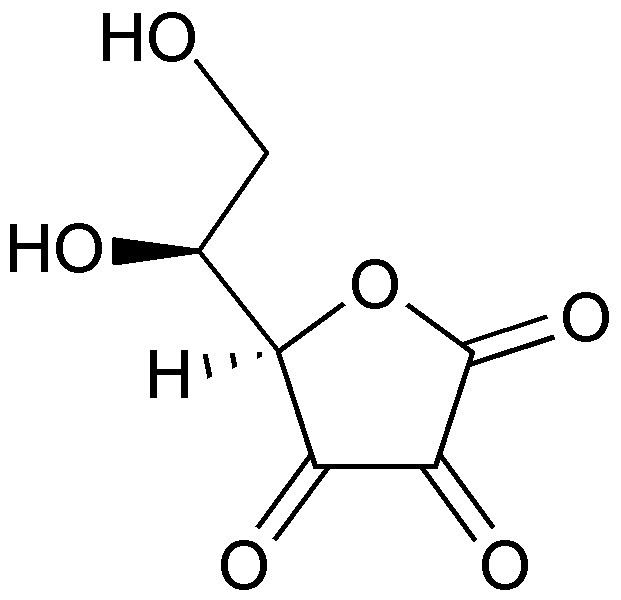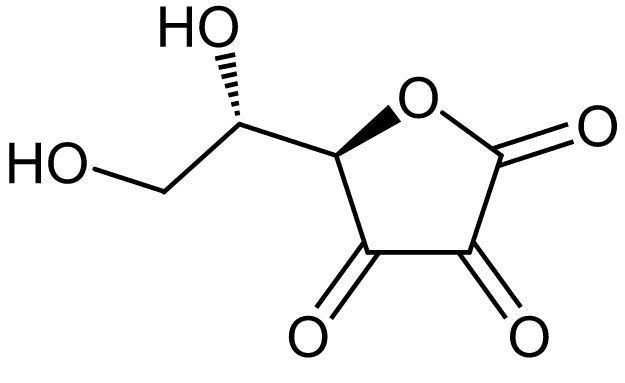 | ||
Chemistry project dehydroascorbic acid part 2
Dehydroascorbic acid (DHA) is an oxidized form of ascorbic acid (vitamin C). It is actively imported into the endoplasmic reticulum of cells via glucose transporters. It is trapped therein by reduction back to ascorbate by glutathione and other thiols. The (free) chemical radical semidehydroascorbic acid (SDA) also belongs to the group of oxidized ascorbic acids.
Contents
- Chemistry project dehydroascorbic acid part 2
- Structure and Physiology
- Transport to mitochondria
- Transport to the brain
- Use
- References

Chemistry project dehydroascorbic acid part 2
Structure and Physiology

Although a sodium-dependent transporter for vitamin C exists, it is present mainly in specialized cells, whereas the glucose transporters, the most notable being GLUT1, transport Vitamin C (in its oxidized form, DHA) in most cells, where recycling back to ascorbate generates the necessary enzyme cofactor and intracellular antioxidant, (see Transport to mitochondria).

The structure shown here for DHA is the commonly shown textbook structure. This 1,2,3-tricarbonyl is too electrophilic to survive more than a few milliseconds in aqueous solution, however. The actual structure shown by spectroscopic studies is the result of rapid hemiacetal formation between the 6-OH and the 3-carbonyl groups. Hydration of the 2-carbonyl is also observed. The lifetime of the stabilized species is commonly said to be about 6 minutes under biological conditions. Destruction results from irreversible hydrolysis of the ester bond, with additional degradation reactions following. Crystallization of solutions of DHA gives a pentacyclic dimer structure of indefinite stability. Recycling of ascorbate via active transport of DHA into cells, followed by reduction and reuse, mitigates the inability of humans to synthesize it from glucose.
Transport to mitochondria

Vitamin C accumulates in mitochondria, where most of the free radicals are produced, by entering as DHA through the glucose transporters, GLUT10. Ascorbic acid protects the mitochondrial genome and membrane.
Transport to the brain
Vitamin C does not pass from the bloodstream into the brain, although the brain is one of the organs that have the greatest concentration of vitamin C. Instead, DHA is transported through the blood–brain barrier via GLUT1 transporters, and then converted back to ascorbate.
Use
Dehydroascorbic acid has been used as a vitamin C dietary supplement.
As a cosmetic ingredient, dehydroascorbic acid is used to enhance the appearance of the skin. It may be used in a process for permanent waving of hair and in a process for sunless tanning of skin.
In a cell culture growth medium, dehydroascorbic acid has been used to assure the uptake of vitamin C into cell types that do not contain ascorbic acid transporters.
As a pharmaceutical agent, some research has suggested that administration of dehydroascorbic acid may confer protection from neuronal injury following an ischemic stroke. The literature contains many reports on the antiviral effects of vitamin C, and one study suggests dehydroascorbic acid has stronger antiviral effects and a different mechanism of action than ascorbic acid. Solutions in water containing ascorbic acid and copper ions and/or peroxide, resulting in rapid oxidation of ascorbic acid to dehydroascorbic acid, have been shown to possess powerful but short-lived antimicrobial, antifungal, and antiviral properties, and have been used to treat gingivitis, periodontal disease, and dental plaque. A pharmaceutical product named Ascoxal is an example of such a solution used as a mouth rinse as an oral mucolytic and prophylactic agent against gingivitis. Ascoxal solution has also been tested with positive results as a treatment for recurrent mucocutaneous herpes, and as a mucolytic agent in acute and chronic pulmonary disease such as emphysema, bronchitis, and asthma by aerosol inhalation.
